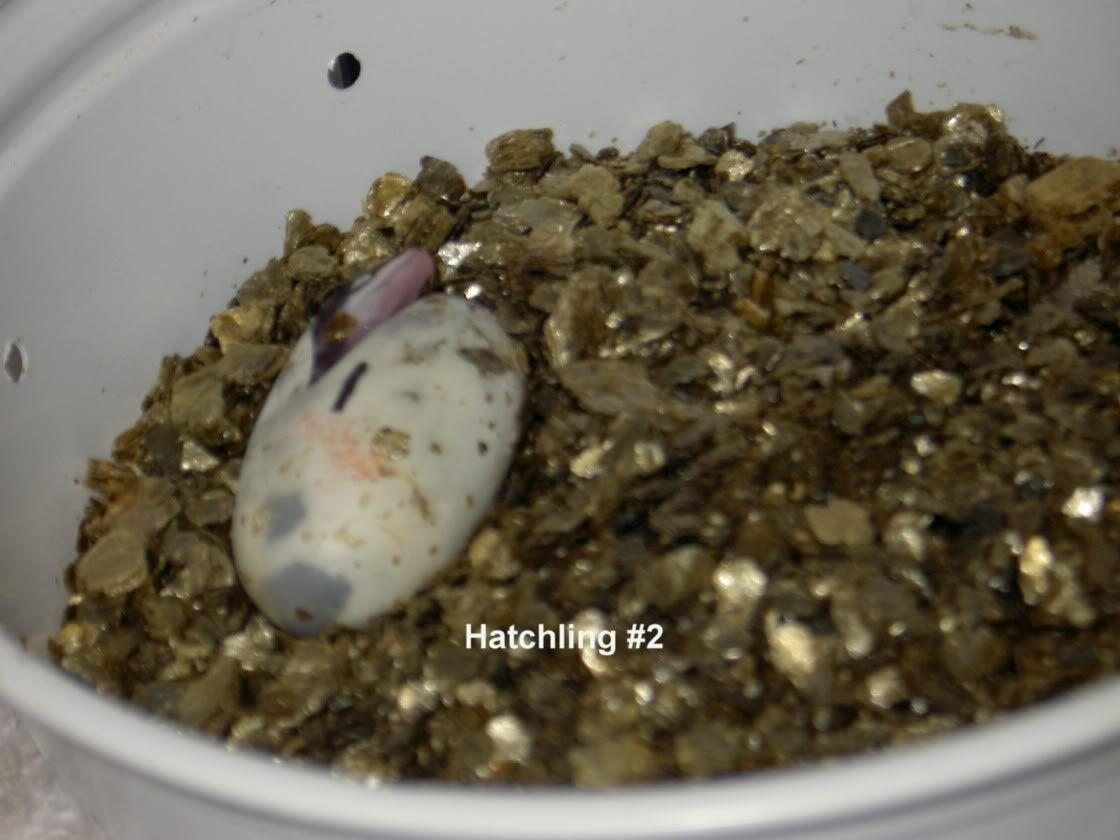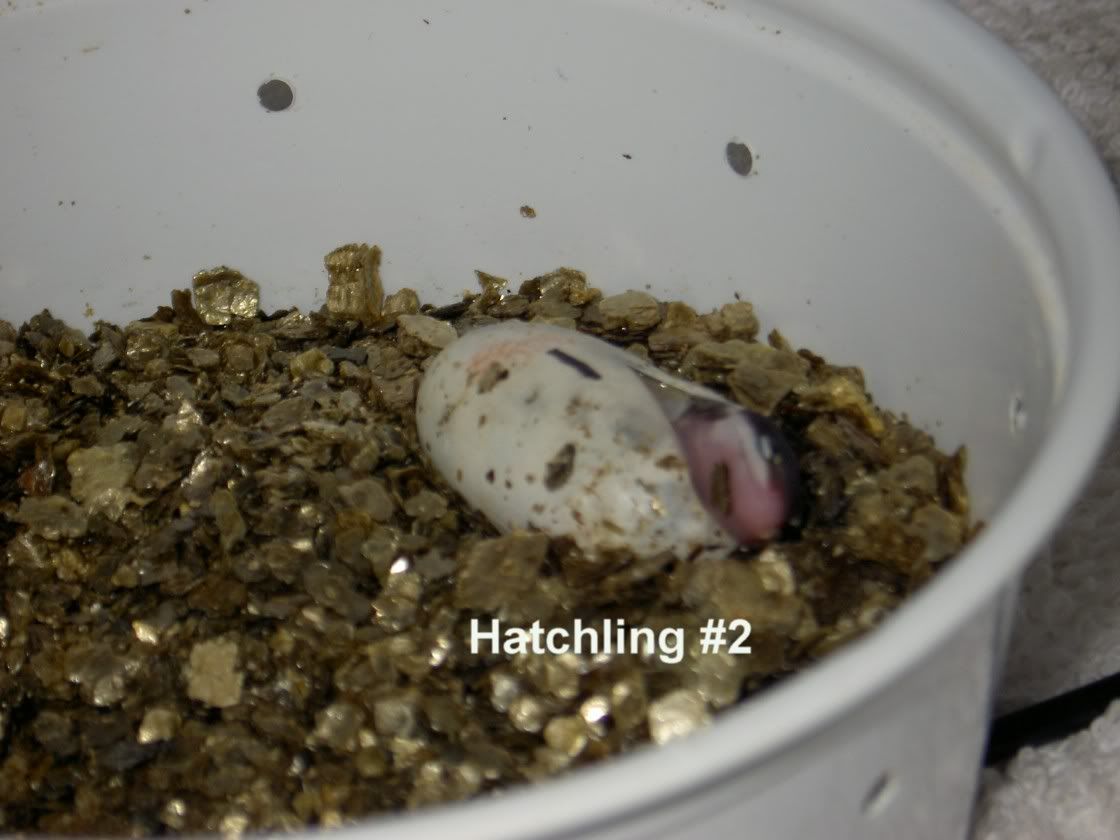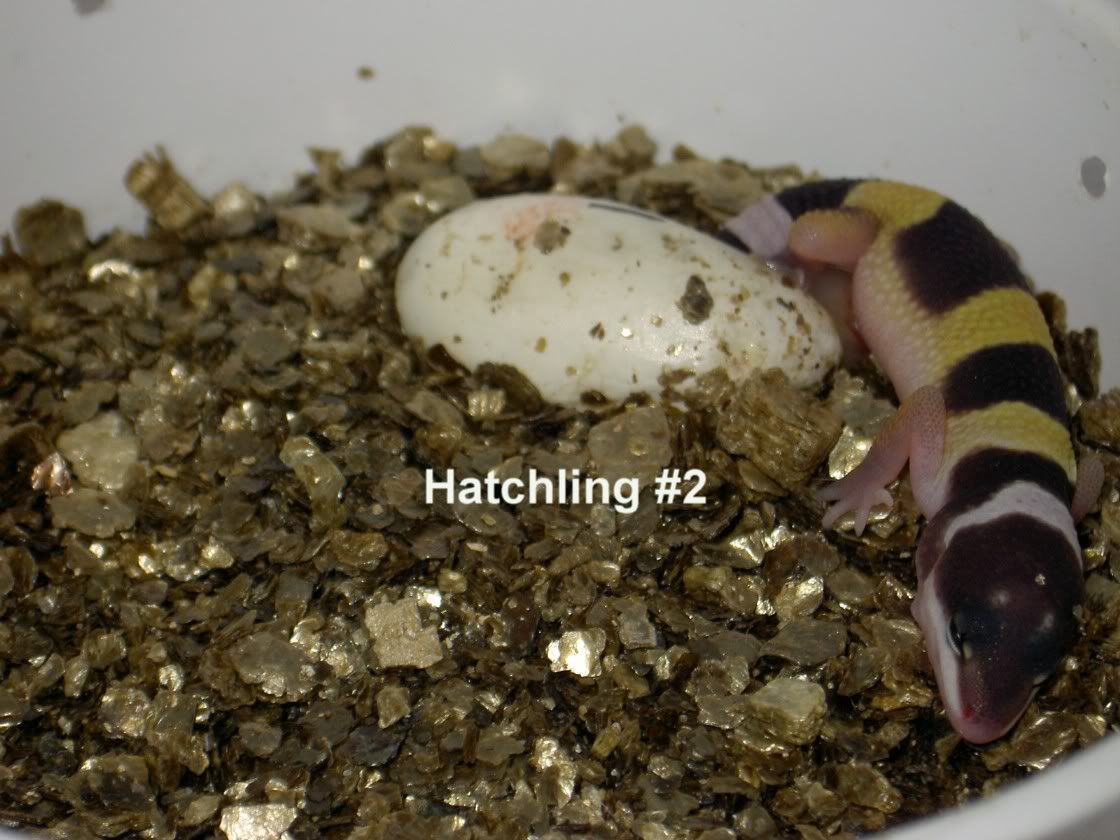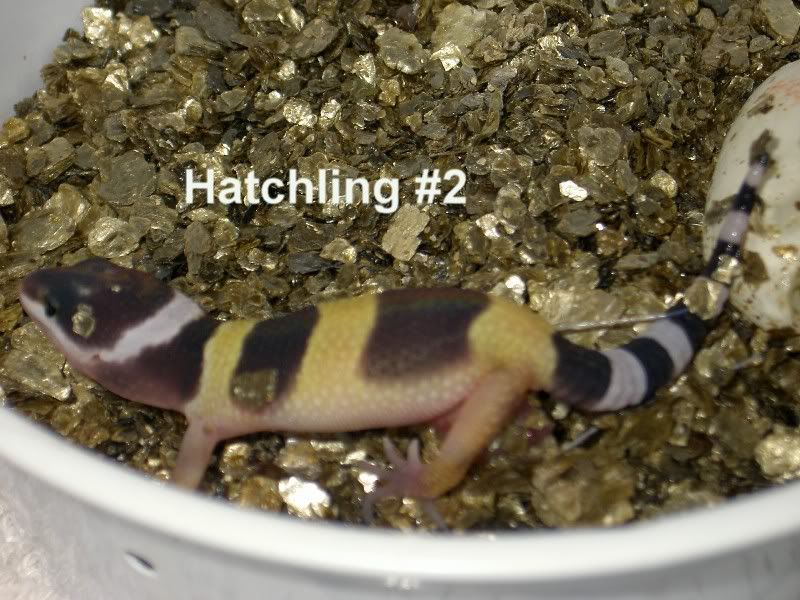Breeding Leopard Geckos
~Home ~Available~ Caresheet~ Breeding
Mealworms~ Breeding~Names~ Links~Terms~ Contact~
Breeding and egg care:
Before you
breed your geckos PLEASE be sure you’re absolutely
ready. You can read through this page and when you’re
done decide if you’re up for the challenge. First off
you’re going to need a male and a female gecko. If you’re
asking the question “How do I tell?” keep reading. It is pretty
easy to sex Leopard Geckos as long as they are over 5 months old. Below
are some pictures that will help you.

Male:
Males will
have two visible bulges right below the vent, also notice an upside down “V” of pores
above the vent.

Female:
Female lack
both the pores and bulges that the males possess.
Next you
need to decide what you are going to do with the babies. Remember one female
alone can lay up to 16 eggs per breeding season. That’s
a lot of little geckos! Are you going to sell them? Keep
them? Think about everything thoroughly.
It’s
better to introduce the female gecko to the male, you get a better breeding
response. Leave them together for about a week unless you notice that one of
them is getting stressed out or if you have already
witnessed them mating. Breeding signs include the male biting the female on the
neck and vibrating his tail. It takes about 2 weeks to a month for the first
eggs to appear. Here’s a pic of a gravid female. When you find some eggs don’t touch them until you do the following: mark the top of
the egg! The embryo will drown if the egg is turned. Take a sharpie and just
put a line across the top that way you will always know which way they were laid and which side is the top. After about a week you can candle the eggs to see if they are fertile.
Take a flashlight and put some aluminum foil over the top, poke a hole so a
little stream of light can come out. In a fertile egg
you will be able to see vains and it will give off a pinkish glow. A infertile egg will look empty and will give off a
yellowish glow. Even if an egg looks infertile DO NOT
throw it away! A lot of babies hatch from eggs that LOOK infertile. After about a
couple of weeks and infertile egg will start to stink, dent in and grow mold.
When all this happen at once you can pretty much say
that the egg is dead.
After you
have witnessed you geckos breeding or know that your female is gravid it’s time to get the incubator ready. I have a hova-bator,
you can buy one here for $35.00. You
can also make your own incubator, do a search on
Google for “homemade reptile incubator”. There’s almost
always one that pops up that tells you how to build a small incubator
out of a 10gal tank and a aquarium heater. Leopard Gecko’s gender is decided by
the temperature they are incubated at, here’s a chart.
|
Females =
78*F – 82*F |
|
Half/Half
= 83*F –85*F |
|
Males=
86*F – 90*F |
You’ll
need to have a container to put the eggs in with a half and half ratio of perlite
and water in it. Poke holes in the container and put a lid on it. Open it about
3-4 days for air exchange. When the eggs are laid just
set them in the container and leave them. Don’t handle
them too much and try not to open the incubator much either, temp fluctations
can cause the eggs to die or deformed babies (if they hatch). The humidity
needs to be about 80% in the container you put the eggs in.
It takes anywhere from 30-80 days for the eggs to hatch. The higher your temps the faster they will hatch.
Hatchlings:
Here are
some pics taken of a gecko hatching. It’s really
amazing how they fit into the egg.




When one of
the eggs has hatched the work begins. Put the baby in it’s own enclosure. DO NOT put the baby in
with the mom or dad, it will become a meal. The
hatchling’s cage doesn’t have to be really fancy, use
paper towels as the sub and give it little hides out of like toilet paper
roles. Newly hatched geckos aren’t that smart when it
comes to eating/drinking out of bowls. I usually take a paper towel and fold it
up and get it wet and let the geckos drink off of it.
I do that for about the first month. Baby geckos don’t
eat for the first couple of days, once you see their first poop you can
probably guess right that they have shed for the first time and you can now
start feeding them. Get a couple of small
crickets and put them in the tank...if you don’t notice the gecko eating
them then you can cut the butt off of one and use tweezers to hand feed the
gecko. Usually after they taste their first cricket/mealworm
they have a good appetite. After about two weeks I
switch them to mealworms, which they eat from a bowl (a little one).
**page
still under construction, check back soon**
Copyright 2004-2005